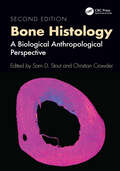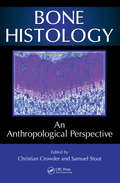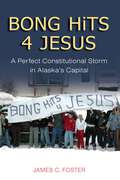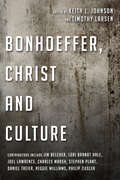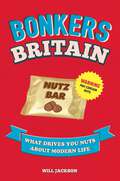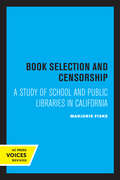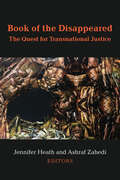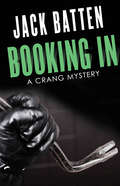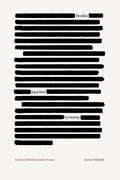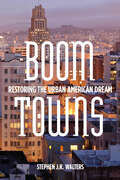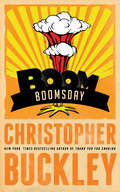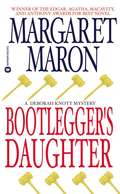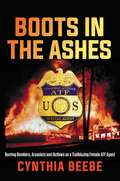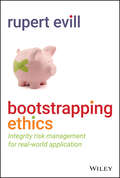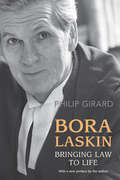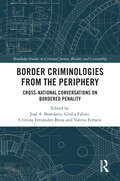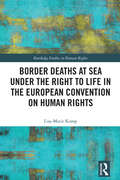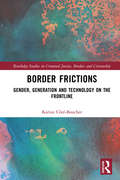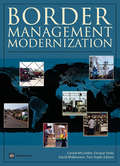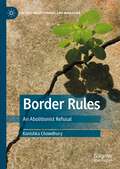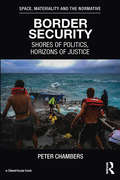- Table View
- List View
Bone Histology: A Biological Anthropological Perspective
by Christian Crowder Sam D. StoutBone Histology: A Biological Anthropological Perspective, Second Edition builds on the success of the first edition, recognizing the significant advances that have occurred in bone biology, histology, and histological techniques and methods in subsequent years. Bones and teeth are of considerable importance for anthropological and related research, due to their nature as hard tissues. The physical remains of humans available to biological anthropologists, bioarchaeologists, paleopathologists, and paleontologists are, with exception to forensic anthropology, limited to skeletal material; fortunately, the same characteristics of hard tissues that lead to their persistence after death make them a storehouse of information about biological processes experienced during the life of the individual. This book covers important aspects of bone biology which underlie the microstructure of hard tissues that are crucial for histological analysis. This includes an overview of two major metabolic processes, bone remodelling and modelling, and their importance for understanding and interpreting bone histomorphology. Subsequent chapters apply histological methods to the biological profile, such as estimation of age and evaluation of pathological conditions that affect the skeleton, or to determine whether remains are human or nonhuman. Finally, there is a discussion of current research trends in bone histology, with a focus on technological advances in imaging and methods. Reviews of four well-documented skeletal collections—developed specifically for bone histological and imaging research—are discussed, as well as, the importance of such collections for future research. Bone Histology, Second Edition has assembled a collection of contributing authors, with extensive experience and expertise in various aspects of hard tissue biology, to provide readers with an overview of the current state of research and potential applications of histological analysis in biological anthropology, forensic anthropology, and skeletal biology. It serves as a valuable resource for students, researchers, and practitioners in these and related disciplines.
Bone Histology: An Anthropological Perspective
by Christian Crowder Sam StoutA broad understanding of bone and tooth microstructure is necessary for constructing the biological profile of an individual or individuals within a population. Bone Histology: An Anthropological Perspective brings together authors with extensive experience and expertise in various aspects of hard tissue histology to provide a comprehensive discuss
Bong Hits 4 Jesus: A Perfect Constitutional Storm in Alaska's Capital
by James C. FosterIn January 2002, for the first time, the Olympic Torch Relay visited Alaska on its way to the Winter Games. When the relay runner and accompanying camera cars passed Juneau-Douglas High School, senior Joseph Frederick and several friends unfurled a fourteen-foot banner reading "BONG HiTS 4 JESUS." An in-depth look at student rights within a public high school, this book chronicles the events that followed: Frederick's suspension, the subsequent suit against the school district, and, ultimately, the escalation of a local conflict into a federal case. Brought to life through interviews with the principal figures in the case, Bong Hits 4 Jesus is a gripping tale of the boundaries of free speech in an American high school.
Bonhoeffer, Christ and Culture (Wheaton Theology Conference Series)
by Timothy Larsen Keith L. JohnsonDietrich Bonhoeffer (1906-1945) was one of the most compelling theologians of the twentieth century. A complex mix of scholarship and passion, his life and writings continue to fascinate and challenge Christians worldwide. He was a pastor and profound teacher and writer on Christian theology and ethics, yet was also involved in the resistance against Hitler which plotted his assassination. Bonhoeffer graduated from the University of Berlin and earned his doctorate in theology at the age of twenty-one. While pursuing postgraduate work at New York's Union Theological Seminary his life and ministry was profoundly influenced by his unanticipated involvement with the African American Abyssinian Baptist Church in Harlem during that time. Protesting the unconstitutional interference by Hitler of the established national Protestant church and the persecution of the Jews, and rejecting the alignment of the German Christian movement with the Nazi regime, Bonhoeffer became head of an underground seminary for the resisting Confessing Church in Germany. At the 2012 Wheaton Theology Conference, Bonhoeffer's thought and ministry were explored in stimulating presentations. Bonhoeffer's views of Jesus Christ, the Christian community, and the church's engagement with culture enjoyed special focus. Throughout it is clear that in the twenty-first century, Bonhoeffer's legacy is as provocative and powerful as ever.
Bonhoeffer: God’s Conspirator in a State of Exception
by Petra BrownTheologian. Conspirator. Martyr. Saint. Dietrich Bonhoeffer was killed in the waning days of World War II, having been implicated in the July 20th assassination attempt on Hitler. Since his death, Bonhoeffer’s life and writings have inspired contradictory responses. He is often seen as a model for Christian pacifist resistance, and more recently for violent direct political action. Bonhoeffer’s name has been invoked by violent anti-abortion protestors as well as political leaders calling for support on a ‘war on terror’ in the aftermath of 9/11. Petra Brown critically analyses Bonhoeffer’s writing preceding and during his conspiracy involvement, particularly his recurring concept of the ‘extraordinary.’ Brown examines this idea in light of ‘the state of exception,’ a concept coined by the one-time Nazi jurist and political theorist, Carl Schmitt. She also draws on the existentialist philosopher Sören Kierkegaard to consider what happens when discipleship is understood as obedience to a divine command. This book aims to complicate an unreflective admiration of Bonhoeffer’s decision for conspiracy, and draws attention to the potentially dangerous implications of his emerging political theology.
Bonkers Britain: What Drives You Nuts about Modern Life
by Will JacksonHaving a good old moan about little everyday frustrations is a quintessential part of being British! This book collects the most mind-boggling and side-splitting examples of potty political correctness, ridiculous red tape and well-intentioned (but ultimately wacky) warnings from across bonkers Britain today.
Bonkers Britain: What Drives You Nuts about Modern Life
by Will JacksonHaving a good old moan about little everyday frustrations is a quintessential part of being British! This book collects the most mind-boggling and side-splitting examples of potty political correctness, ridiculous red tape and well-intentioned (but ultimately wacky) warnings from across bonkers Britain today.
Bonnie and Clyde (History's Worst)
by James Buckley Jr.Get a behind-the-scenes glimpse of what it takes to be considered two of the worst figures in history, with the third book in this nonfiction series that focuses on the most despicable historical figures.Bonnie Parker and Clyde Barrow are possibly the most famous and most romanticized criminals in American history. When the police found photos of them posing with guns and goofing around, they became media darlings. However, their fame was short-lived, and their lives would end in a violent police ambush. Because the reality was very different. During their 1930s crime spree, the two young Texans and the rest of their gang lived a vicious life filled with narrow escapes, bungled robberies, injuries, and murders. And they weren’t the only gangsters operating at the time. Criminals like Al Capone, Charles “Pretty Boy” Floyd, and “Ma” Barker grabbed their own share of headlines, but in the end it was Bonnie and Clyde who really captured the public’s imagination. A lot of that was because of Bonnie herself. The cute, blonde criminal was unique at the time. There is no question that their story continues to fascinate writers, musicians, visual artists, and filmmakers. But is that fascination justified? Or are we confusing the movie images with reality and ignoring the ugly truth of their story?
Book Selection and Censorship: A Study of School and Public Libraries in California
by Marjorie FiskeThis title is part of UC Press's Voices Revived program, which commemorates University of California Press’s mission to seek out and cultivate the brightest minds and give them voice, reach, and impact. Drawing on a backlist dating to 1893, Voices Revived makes high-quality, peer-reviewed scholarship accessible once again using print-on-demand technology. This title was originally published in 1969.
Book of the Disappeared: The Quest for Transnational Justice (Ethnic Conflict: Studies in Nationality, Race, and Culture)
by Jennifer Heath Ashraf ZahediBook of the Disappeared confronts worldwide human rights violations of enforced disappearance and genocide and explores the global quest for justice with forceful, outstanding contributions by respected scholars, expert practitioners, and provocative contemporary artists. This profoundly humane book spotlights our historic inhumanity while offering insights for survival and transformation.
Booking In: A Crang Mystery
by Jack BattenMystery-solving criminal lawyer Crang returns to investigate the disappearance of two rare books. Fletcher Marshall is a Toronto antiquarian book dealer, internationally respected in the business. One night, someone blows the safe in his office and makes off with the contents, which include an infamous forged first edition of Elizabeth Barrett Browning’s Sonnets from the Portuguese that is in itself a collector’s item. Fletcher, who was still in the process of verifying the book, doesn’t even know whether it was the real thing or a clever forgery (of a forgery). But rather than summon the cops to investigate the theft, he turns to his pal Crang, the nervy criminal lawyer, hoping he can retrieve the books before their owner gets wind of the crime. The owner happens to be the richest woman in Canada and a tough cookie who could ruin Fletcher’s career. Crang gets on the hunt, learning much about the trade in musty books and the lucrative business it makes for forgers. Just as he seems to be getting close to answers, a shocking development makes things much more complicated — and much more dangerous.
Books against Tyranny: Catalan Publishers under Franco
by Laura VilardellCatalan-language publishers were under constant threat during the dictatorship of Francisco Franco (1939–75). Both the Catalan language and the introduction of foreign ideas were banned by the regime, preoccupied as it was with creating a "one, great, and free Spain." Books against Tyranny compiles, for the first time, the strategies Catalan publishers used to resist the censorship imposed by Franco's regime. Author Laura Vilardell examines documents including firsthand witness accounts, correspondence, memoirs, censorship files, newspapers, original interviews, and unpublished material housed in various Spanish archives. As such, Books against Tyranny opens up the field and serves as an informative tool for scholars of Franco's Spain, Catalan social movements, and censorship more generally.
Boom Towns: Restoring the Urban American Dream
by Stephen J.K. WaltersAmerican cities, once economic and social launch pads for their residents, are all too often plagued by poverty and decay. One need only to look at the ruins of Detroit to see how far some once-great cities have fallen, or at Boston and San Francisco for evidence that such decline is reversible. In Boom Towns, Stephen J.K. Walters diagnoses the root causes of urban decline in order to prescribe remedies that will enable cities to thrive once again. Arguing that commonplace explanations for urban decay misunderstand the nature our towns, Walters reconceives of cities as dense accumulations of capital in all of its forms—places that attract people by making their labor more productive and their leisure more pleasurable. Policymakers, therefore, must properly define and enforce property rights in order to prevent the flight of capital and the resulting demise of urban centers. Using vivid evocations of iconic towns and the people who crucially affected their destinies, Walters shows how public policy measures which aim to revitalize often do more harm than good. He then outlines a more promising set of policies to remedy the capital shortage that continues to afflict many cities and needlessly limit their residents' opportunities. With its fresh interpretation of one of the American quandaries of our day,Boom Towns offers a novel contribution to the debate about American cities and a program for their restoration.
Boomsday
by Christopher BuckleyOutraged over the mounting Social Security debt, Cassandra Devine, a charismatic 29-year-old blogger and member of Generation Whatever, incites massive cultural warfare when she politely suggests that Baby Boomers be given government incentives to kill themselves by age 75. Her modest proposal catches fire with millions of citizens, chief among them "an ambitious senator seeking the presidency." With the help of Washington's greatest spin doctor, the blogger and the politician try to ride the issue of euthanasia for Boomers (called "transitioning") all the way to the White House,over the objections of the Religious Right, and of course, the Baby Boomers, who are deeply offended by demonstrations on the golf courses of their retirement resorts.
Bootlegger's Daughter
by Margaret MaronUnconventional, still unwed (at the ripe old age of 34) North Carolina attorney Deborah Knott has done the unthinkable: tossed her hat into the heated race for district judge of old boy-ruled Colleton County. The only female candidate, she's busy defending indigent clients and reeling in voters. Then suddenly, the young daughter of Janie Whitehead begs her to help solve Janie's senseless, never-solved, eighteen-year-old murder. Deborah takes on the case: following twisted, typically Southern bloodlines, turning up dangerous, decades-old secrets, and inspiring someone to go on an all-out campaign to derail her future--political and otherwise. But it will take more than sleazy smear tactics to scare this determined steel magnolia off the scent of down-home deceit...even in a town where a cool slug of moonshine made by Deborah's father can go down just as smoothly as a cold case of triple murder. <P><P> Edgar Allen Poe Award Winner.
Boots in the Ashes: Busting Bombers, Arsonists and Outlaws as a Trailblazing Female ATF Agent
by Cynthia BeebeThe thrilling career of ATF agent Cynthia Beebe is told through the lens of six-high profile cases involving bombings, arson, and the Hell's Angels. Boots in the Ashes is the memoir of Cynthia Beebe's groundbreaking career as one of the first women special agents for the Bureau of Alcohol, Tobacco, Firearms and Explosives, (ATF). A smart and independent girl growing up in suburban Chicago, she unexpectedly became one of the first women to hunt down violent criminals for the federal government.As a special agent for 27 years, Beebe gives the reader first-hand knowledge of the human capacity for evil. She tells the story of how, as a young woman, she overcame many obstacles on her journey through the treacherous world of illegal guns, gangs, and bombs. She battled conflicts both on the streets and within ATF. But Beebe learned how to thrive in the ultra-masculine world of violent crime and those whose job it is to stop it.Beebe tells her story through the lens of six major cases that read like crime fiction: four bombings, one arson fire and a massive roundup of the Hell's Angels on the West Coast. She also shares riveting never before revealed trial testimonies, including killers, bombers, arsonists, victims, witnesses and judges.
Bootstrapping Ethics: Integrity Risk Management for Real-World Application
by Rupert EvillPractical, cost-effective tools for personal and organizational risk mitigation In Risk Management: Tools, Tips, and Techniques to Help Your Organization Achieve Its Strategic Goals, accomplished fraud investigator and risk advisor Rupert Evill delivers a smart, simple, and hands-on guide to managing risk and ethics in your organization. You&’ll learn to protect yourself, your organization, and your stakeholders from regulatory and other risks with frontline-tested strategies and frameworks designed to achieve both quick wins and long-term risk mitigation. In the book, the author shows you how to create tangible economic returns by reducing organizational exposure to common—and not-so-common—risks by promoting the right values, managing conflict, prioritizing the communities you serve, and preventing discrimination and harassment against your employees. You&’ll also: Learn to manage external stakeholders and their expectations Keep your risk mitigation strategies cost-effective and straightforward so you can scale them throughout your organization Get on top of your diversity, equity, and inclusion efforts and make sure they&’re getting resultsA can&’t-miss resource for purpose-driven changemakers looking to maximize their impact at the organizations they serve and in the world, Risk Management is also the tactical and practical antidote to the seemingly endless stream of new regulations and oversight facing many modern firms.
Bora Laskin
by Philip GirardIn any account of twentieth-century Canadian law, Bora Laskin (1912-1984) looms large. Born in northern Ontario to Russian-Jewish immigrant parents, Laskin became a prominent human rights activist, university professor, and labour arbitrator before embarking on his 'accidental career' as a judge on the Ontario Court of Appeal (1965) and later Chief Justice of Canada (1973-1984). Throughout his professional career, he used the law to make Canada a better place for workers, racial and ethnic minorities, and the disadvantaged. As a judge, he sought to make the judiciary more responsive to modern Canadian expectations of justice and fundamental rights.In Bora Laskin: Bringing Law to Life, Philip Girard chronicles the life of a man who, at all points of his life, was a fighter for a better Canada: he fought antisemitism, corporate capital, omnipotent university boards, the Law Society of Upper Canada, and his own judicial colleagues in an effort to modernize institutions and re-shape Canadian law. Girard exploits a wealth of previously untapped archival sources to provide, in vivid detail, a critical assessment of a restless man on an important mission.
Border Criminologies from the Periphery: Cross-national Conversations on Bordered Penality (Routledge Studies in Criminal Justice, Borders and Citizenship)
by José A. Brandariz, Giulia Fabini, Cristina Fernández-Bessa and Valeria FerrarisThis book contributes to and broadens the field of Border Criminology, by bringing together a collection of chapters from leading scholars engaged in cross-national and comparative conversations on bordered penality and crimmigration practices, with a specific focus on research conducted in places that may be considered peripheral and semi-peripheral jurisdictions.It builds not only on global criminological debates but also on southern criminological concerns, thereby enriching border criminology conversations by expanding the epistemological boundaries of these academic debates. It asks a variety of questions. What is the part being played by detention practices at the national level and how is it changing over time? To what extent are deportation policies playing a significant role in the coercive management of unwanted noncitizens? Is the criminal justice system, and more precisely the prison system crucially supplementing the immigration enforcement apparatus in handling undocumented noncitizen groups? Should that be the case, is the increasing criminalization of noncitizens leading to the consolidation of a dual criminal justice system?It is essential reading for those engaged in Border Criminology, Southern Criminology, and Comparative Criminal Justice.
Border Deaths at Sea under the Right to Life in the European Convention on Human Rights (Routledge Studies in Human Rights)
by Lisa-Marie KompThis book focuses on border deaths at sea. It unravels how the interplay of the law of the sea and rules on jurisdiction widen the opportunity for states to make and enforce rules outside their territory, and questions whether this is also accompanied with an obligation to respect the right to life under the European Convention on Human Rights (ECHR) when doing so. By embarking upon the challenge of analysing a cross-border phenomenon in which direct encounters between state agents and the victims are few through the lens of legal obligations, the book unearths avenues for arguing that the ECHR is applicable to border deaths on the high seas and showcases the Court’s creativity in bridging the gap between the Convention and people in need of protection. Furthermore, it demonstrates that the ECHR is applicable to border deaths occurring within the territorial seas of states. It discusses the right to life, as well as the specific obligations of states in respect to border deaths at sea, and demonstrates that in many instances, EU policies fall short of the standards set under the right to life. This book will be of key interest to scholars, students and practitioners in migrant rights, international human rights law, public international law including, refugee and migration law, maritime law, and security studies.
Border Frictions: Gender, Generation and Technology on the Frontline (Routledge Studies in Criminal Justice, Borders and Citizenship)
by Karine Côté-BoucherHow did Canadian border officers come to think of themselves as a "police of the border"? This book tells the story of the shift to law enforcement in Canadian border control. From the 1990s onward, it traces the transformation of a customs organization into a border-policing agency. Border Frictions investigates how considerable political efforts and state resources have made bordering a matter of security and trade facilitation best managed with surveillance technologies. Based on interviews with border officers, ethnographic work carried out in the vicinity of land border ports of entry and policy analysis, this book illuminates features seldom reviewed by critical border scholars. These include the fraught circulation of data, the role of unions in shaping the border policy agenda, the significance of professional socialization in the making of distinct generations of security workers and evidence of the masculinization of bordering. In a time when surveillance technologies track the mobilities of goods and people and push their control beyond and inside geopolitical borderlines, Côté-Boucher unpacks how we came to accept the idea that it is vital to deploy coercive bordering tactics at the land border. Written in a clear and engaging style, this book will appeal to students and scholars in criminology, sociology, social theory, politics, and geography and appeal to those interested in learning about the everyday reality of policing the border.
Border Law
by Deborah A. RosenThe First Seminole War shaped how the United States demarcated its spatial and legal boundaries. Rooted in exceptionalism, manifest destiny, and racism, the legal framework that emerged from Andrew Jackson's invasion of Florida laid the groundwork for the Monroe Doctrine, the Dred Scott decision, and westward expansion, as Deborah Rosen shows.
Border Management Modernization
by David Widdowson Enrique Fanta Tom DoyleBorder clearance processes by customs and other agencies are among the most important and problematic links in the global supply chain. It takes three times as many days, nearly twice as many documents, and six times as many signatures to import goods in poor countries than it does in rich ones. Delays and costs at the border undermine a country's competitiveness, either by taxing imported inputs with deadweight inefficiencies or by adding costs and reducing the competitiveness of exports. As countries have come to realize the importance of trade in achieving sustainable economic growth they have progressively lowered tariffs, established regimes to encourage foreign investment and pursued opportunities for greater regional integration. This progress has, however, been undermined by the high costs and administrative difficulties associated with outdated and excessively bureaucratic border clearance processes which are now often cited as more important barriers to trade than tariffs. Inefficient border processing systems, procedures, and infrastructure result in high transaction costs, long delays in the clearance of imports, exports, and transit goods, and present significant opportunities for administrative corruption. They essentially undermine a country's competitiveness in the international marketplace. Governments around the world are therefore placing increased emphasis on border management reform designed to remove unnecessary barriers to the flow of legitimate trade across their borders. However, in spite of the widespread recognition of the need to improve the efficiency of border management regimes, Customs and other border management agencies in many countries have frequently paid lip service to the trade facilitation agenda. This book is designed to shed new light on these problems and to identify a range of strategies that will help officials meet their traditional control responsibilities while at the same time facilitating legitimate trade. It also provides advice to development professional and key policy makers about what works, what doesn't and why.
Border Rules: An Abolitionist Refusal (Politics of Citizenship and Migration)
by Kanishka ChowdhuryThis book examines both border policies and oppositional narratives of “the border,” 2011–2021, demonstrating that the term designates not merely a line of territorial control but also a set of social relations shaped by persistent, racially differentiated colonial structures and, more recently, by neoliberal modes of accumulation. These relations are shown to determine access to wealth and/or resources and to enable the management of labor, the extraction of surplus, and the accumulation of capital. Discussion in the book is informed by the history of these policies and by the critical literature on borders. Various cultural texts focusing on two border zones—the US–Mexico and the EU–Southern Mediterranean—are analyzed: specifically, two novels, two films, and two murals examined in conjunction with a music video. A path to a borderless future is suggested: an abolitionist refusal of border rules with an insistence on the necessity of abolition.
Border Security: Shores of Politics, Horizons of Justice
by Peter ChambersWhat kind of a world is one in which border security is understood as necessary? How is this transforming the shores of politics? And why does this seem to preclude a horizon of political justice for those affected? Border Security responds to these questions through an interdisciplinary exploration of border security, politics and justice. Drawing empirically on the now notorious case of Australia, the book pursues a range of theoretical perspectives – including Foucault’s work on power, the systems theory of Niklas Luhmann and the cybernetic ethics of Heinz Von Foerster – in order to formulate an account of the thoroughly constructed and political nature of border security. Through this detailed and critical engagement, the book’s analysis elicits a political alternative to border security from within its own logic: thus signaling at least the beginnings of a way out of the cost, cruelty and devaluation of life that characterises the enforced reality of the world of border security.
